The oil and gas industry faces some of the harshest working conditions in the world. Drilling deep into the earth, cutting through rock, and maintaining production lines requires tools that are both strong and reliable. This is where tungsten carbide cutting tools stand out. Known for their exceptional hardness, wear resistance, and long tool life, these tools have become a key part of modern oil and gas operations.
In this blog, we’ll explore what makes tungsten carbide so effective, how it is used in the field, and why it continues to be the smart choice for companies working in demanding drilling and extraction environments.
タングステンカーバイドとは何ですか?
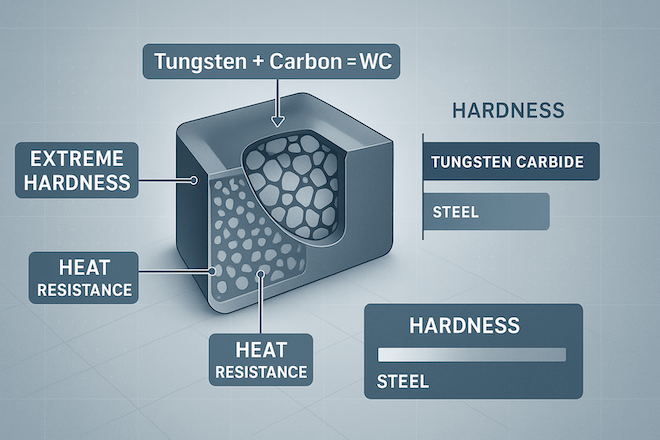
Tungsten carbide is a hard material made by combining tungsten and carbon. The result is a compound that is much harder than steel and can stay sharp even in tough conditions. Tungsten carbide is often used in tools that cut, drill, grind, or shape other materials.
It is popular in the 石油・ガス産業 because it can handle high-pressure, high-temperature, and high-wear environments without breaking or wearing out quickly.
Why Oil and Gas Operations Need High-Performance Tools
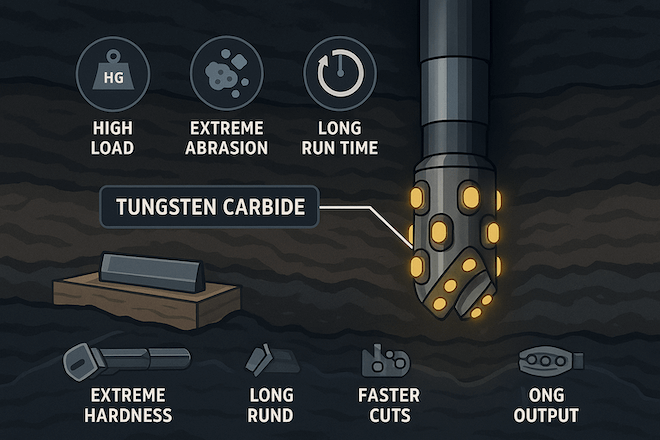
Drilling through rock, sand, and shale is extremely tough on tools. Traditional steel tools wear out fast, causing downtime and replacement costs. 炭化タングステン切削工具 offer a better solution because they last longer and can keep working under extreme conditions.
This is especially important in downhole tools, drilling heads, and subsea components where tool failure can lead to expensive delays and lost production.
Common Tungsten Carbide Tools in Oil and Gas
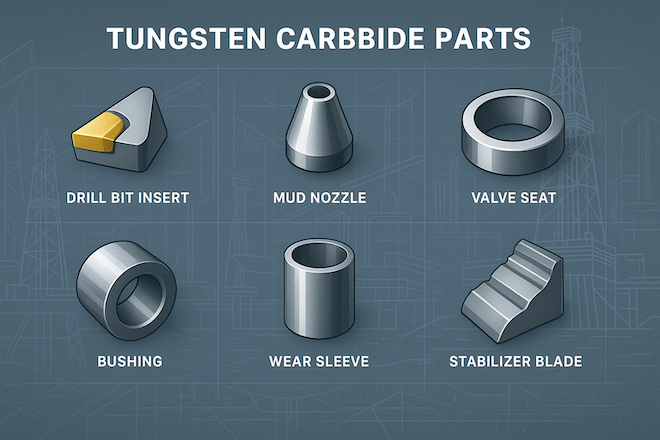
The oil and gas sector uses many types of タングステンカーバイド工具、 含む:
Tungsten carbide inserts for drill bits
Wear-resistant nozzles for mud circulation
Valve parts in high-pressure pipelines
Scrapers and stabilizers with carbide hardfacing
These tools help improve drilling speed, reduce downtime, and cut maintenance costs.
炭化タングステン切削工具を使用する利点
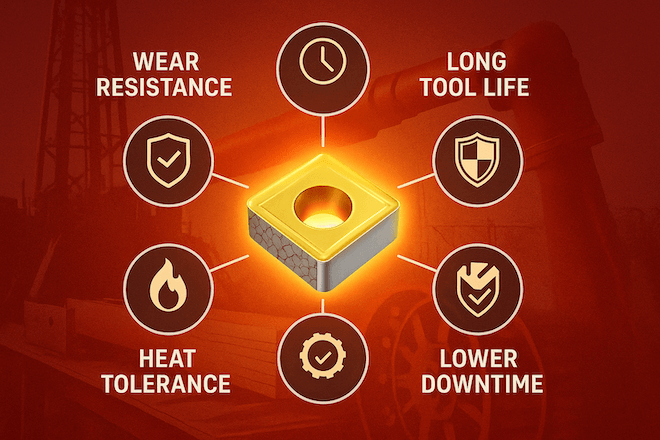
The oil and gas industry chooses tungsten carbide tools for many reasons:
耐摩耗性: They last much longer than steel.
High Strength: They resist deformation under pressure.
熱安定性: They stay strong in high heat.
Precision: They hold their shape for accurate cutting.
Reduced Downtime: Fewer tool changes mean more working hours.
These benefits help reduce costs and improve productivity.
Applications in Oilfield Environments
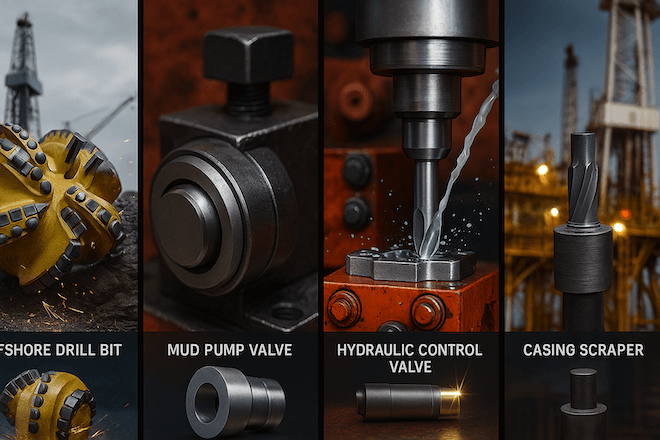
Tungsten carbide tools are used in various parts of oil and gas production:
Drill bits in onshore and offshore rigs
Pump parts in hydraulic fracturing systems
Valves and chokes in high-pressure fluid control
Cutting heads for pipeline trenching
Casing scrapers in wellbore cleaning
Each application requires strength, accuracy, and long service life—qualities that tungsten carbide delivers.
Why Oil and Gas Decision Makers Choose Tungsten Carbide

For managers and engineers in the oil and gas sector, the goal is simple: keep operations running with as little downtime as possible. Tungsten carbide tools help meet this goal by reducing tool change frequency, improving cutting speed, and lowering replacement costs.
By choosing high-performance materials, decision-makers improve both efficiency and profitability.
適切なタングステンカーバイド工具を選ぶためのヒント
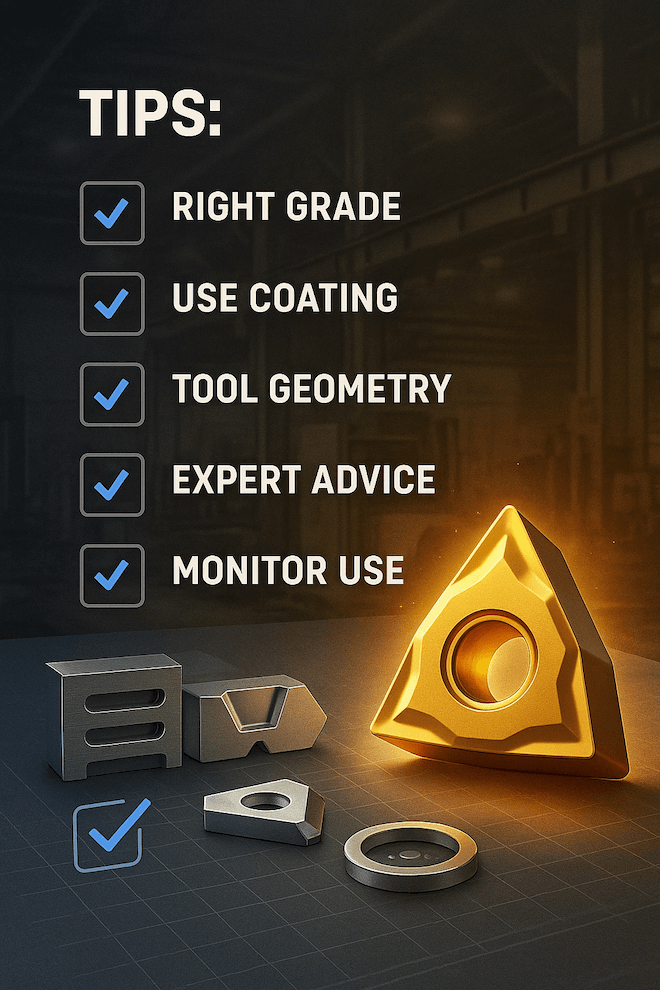
To get the best results from tungsten carbide tools, oil and gas companies should:
Select the correct 炭化物グレード for each use
Use コーティングされた超硬工具 for even longer life
Check tool geometry for material compatibility
経験豊富なサプライヤーと協力
Monitor tool performance with sensors or data logs
Choosing the right tool from the start saves time and money.
結論
The oil and gas industry depends on strong, precise, and long-lasting tools to meet today’s challenges. Tungsten carbide tools provide the performance needed to drill deeper, run longer, and produce more—while cutting costs and downtime. For decision-makers looking to upgrade tool performance, tungsten carbide remains the clear choice.
If you’re seeking high-performance tungsten carbide tools for your oil and gas operations, consider working with a trusted supplier like 再トップ for custom solutions and expert support.
